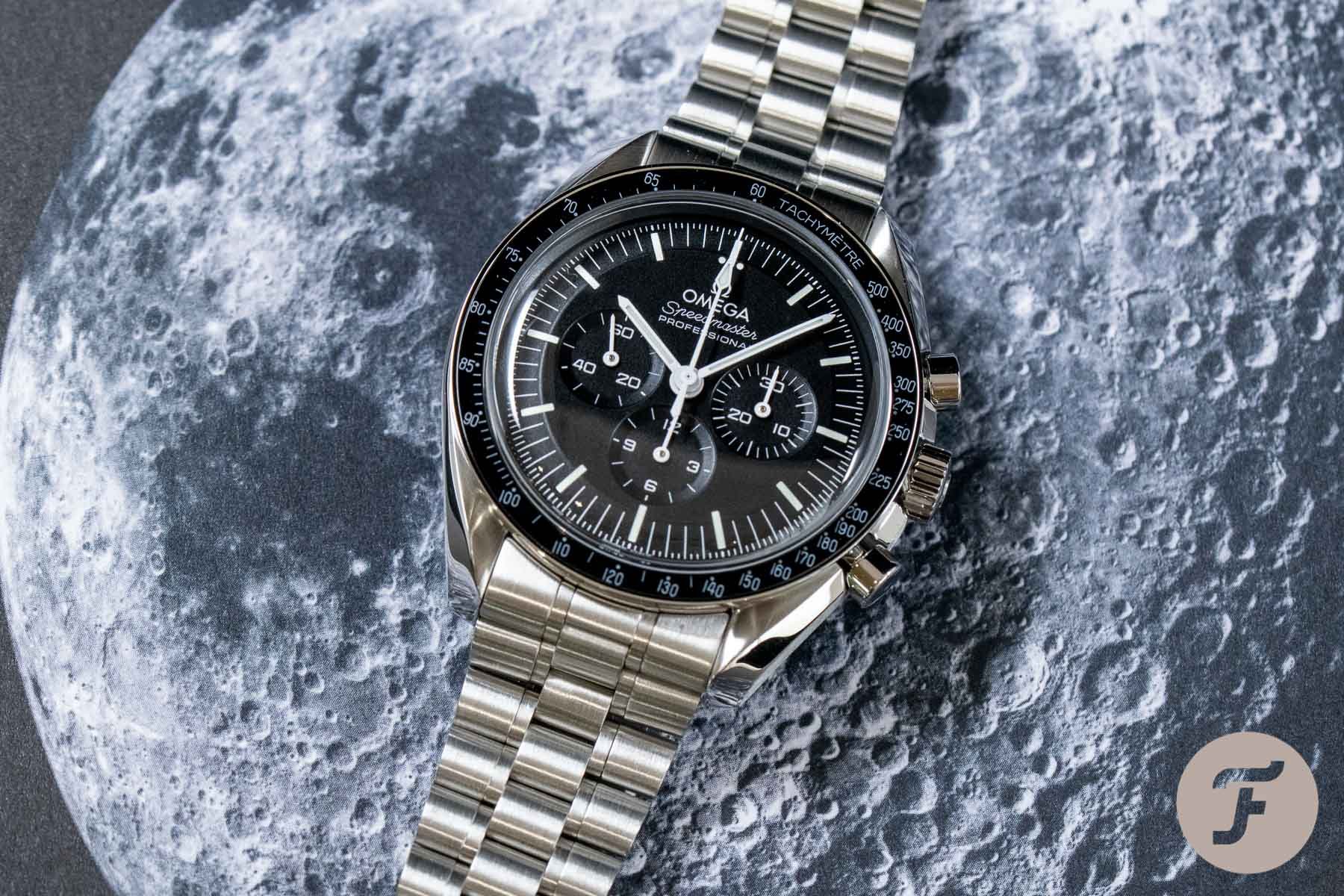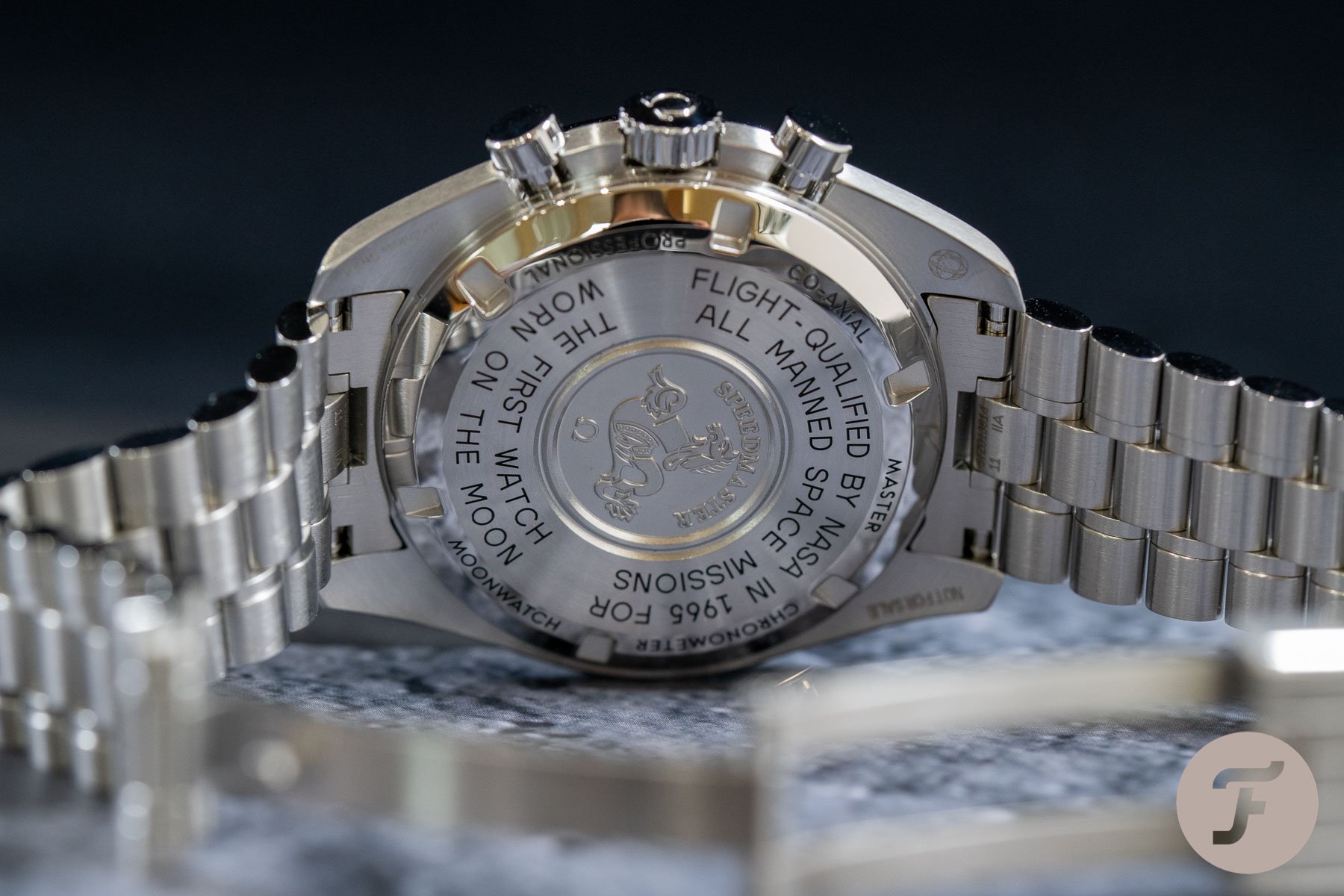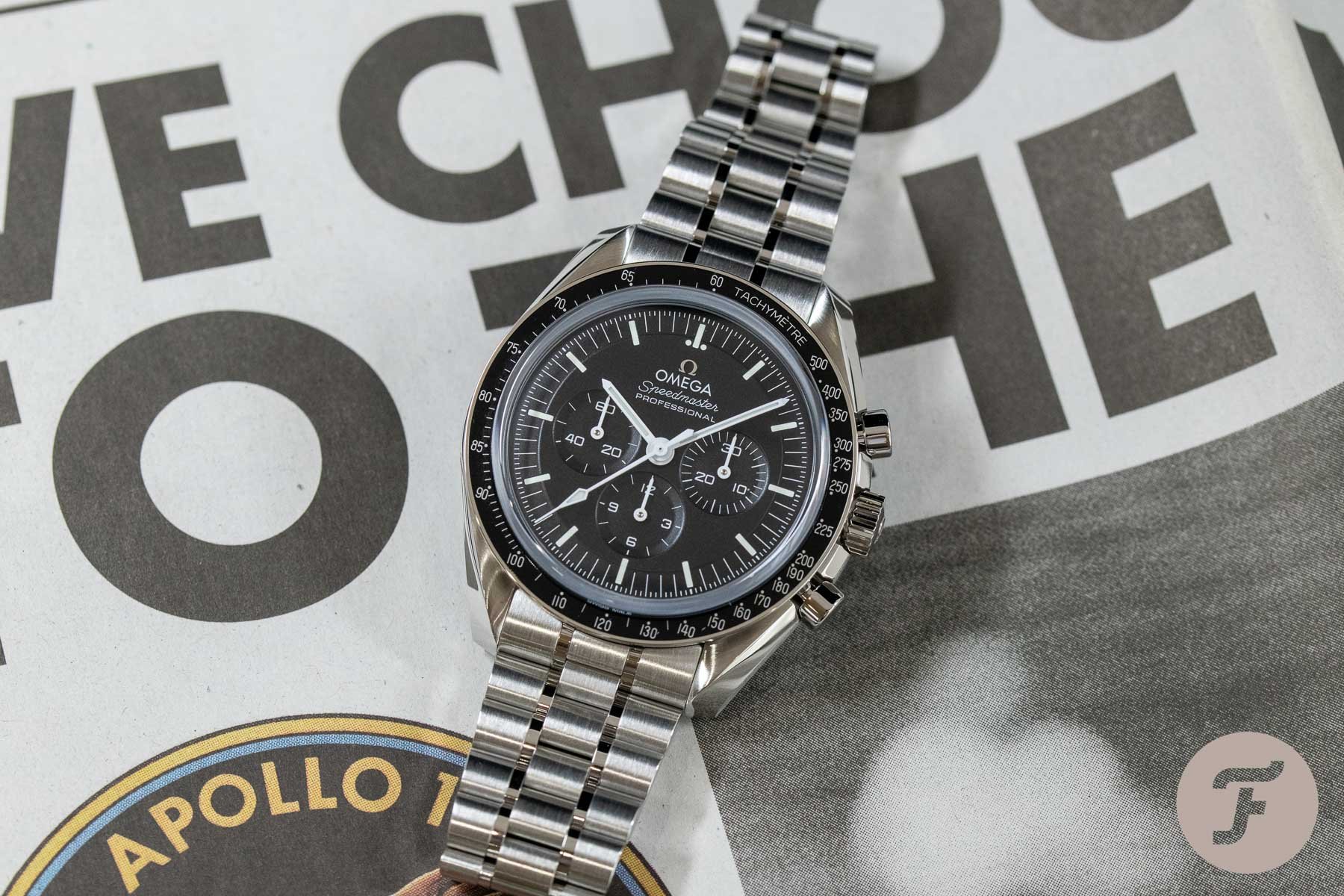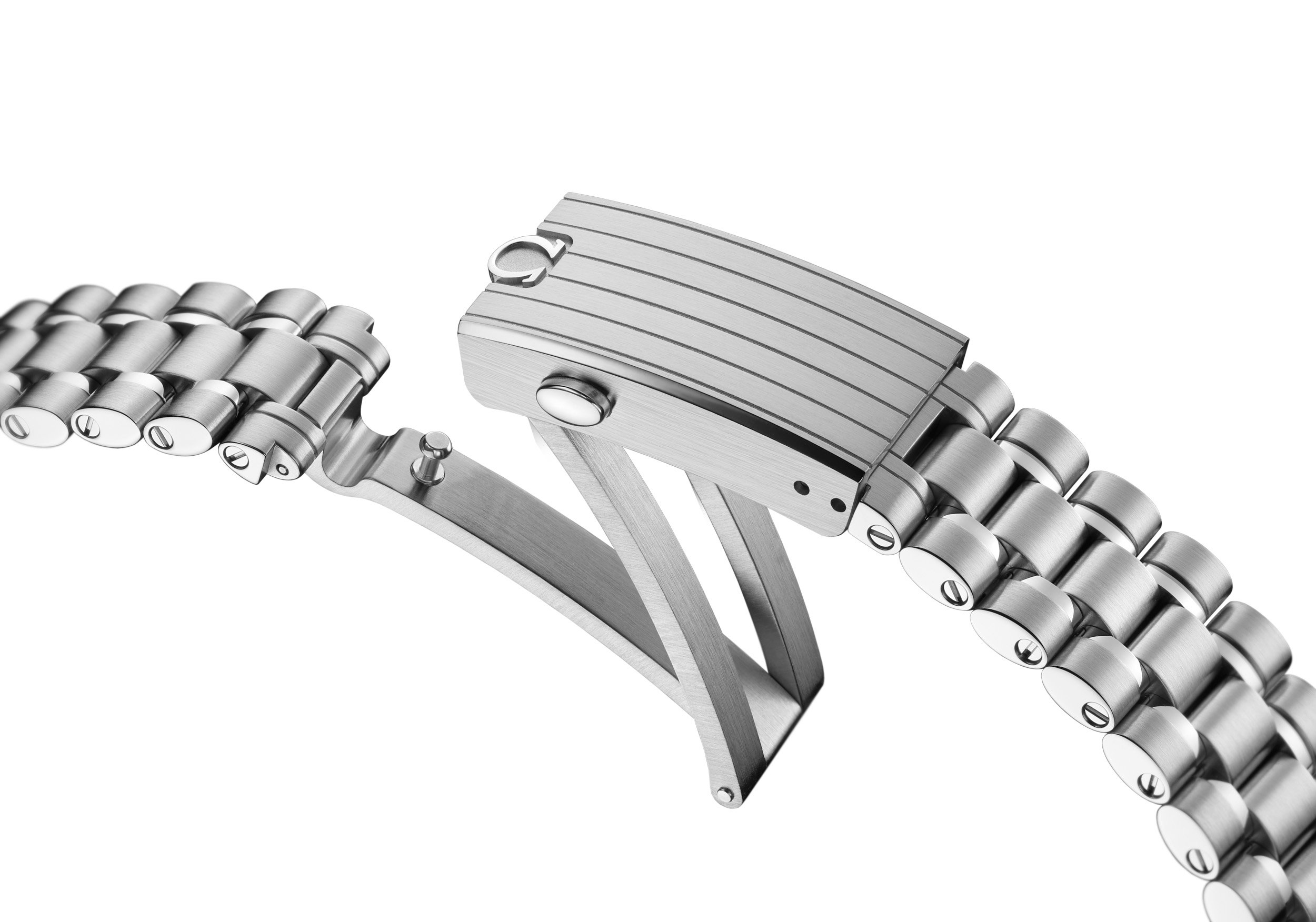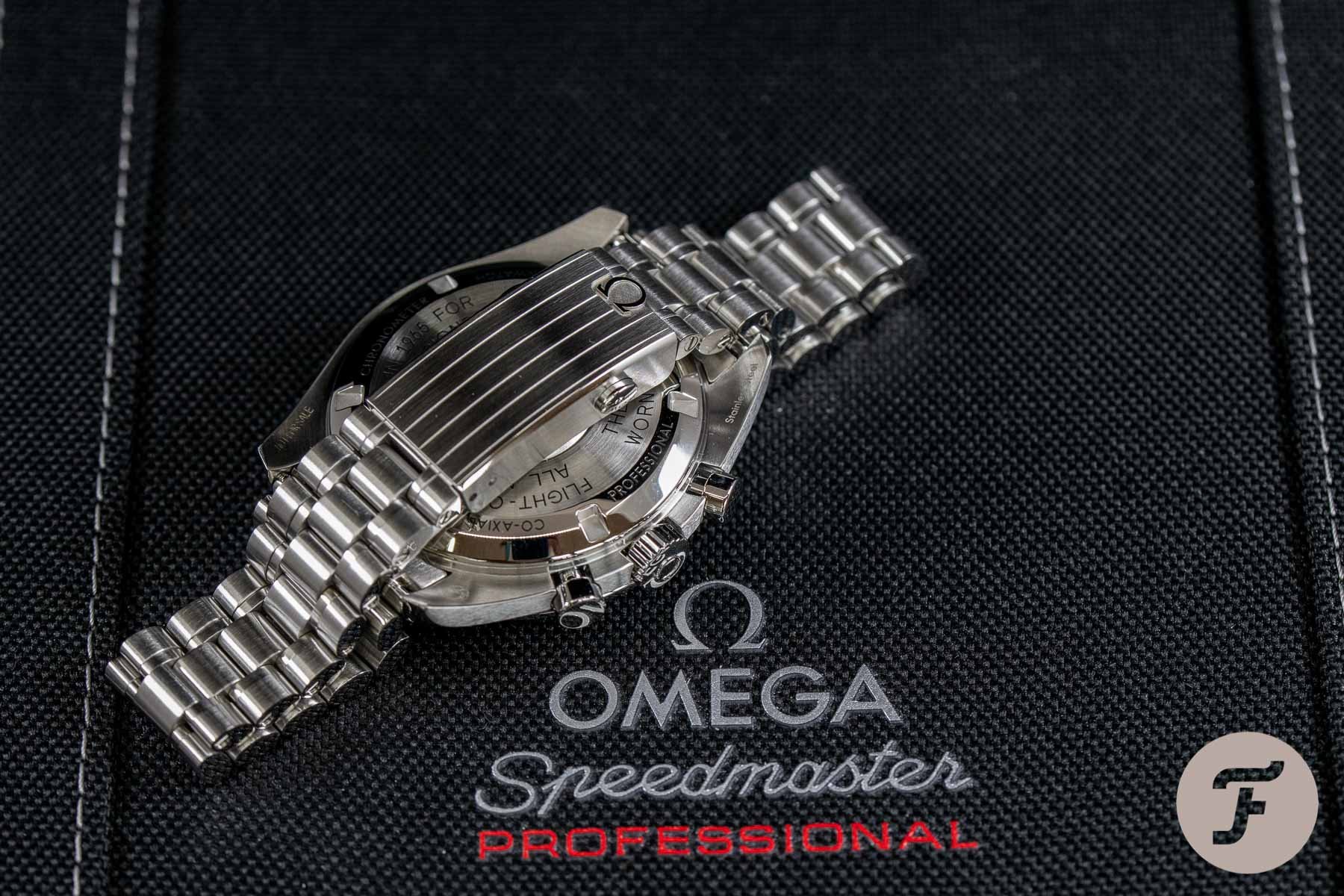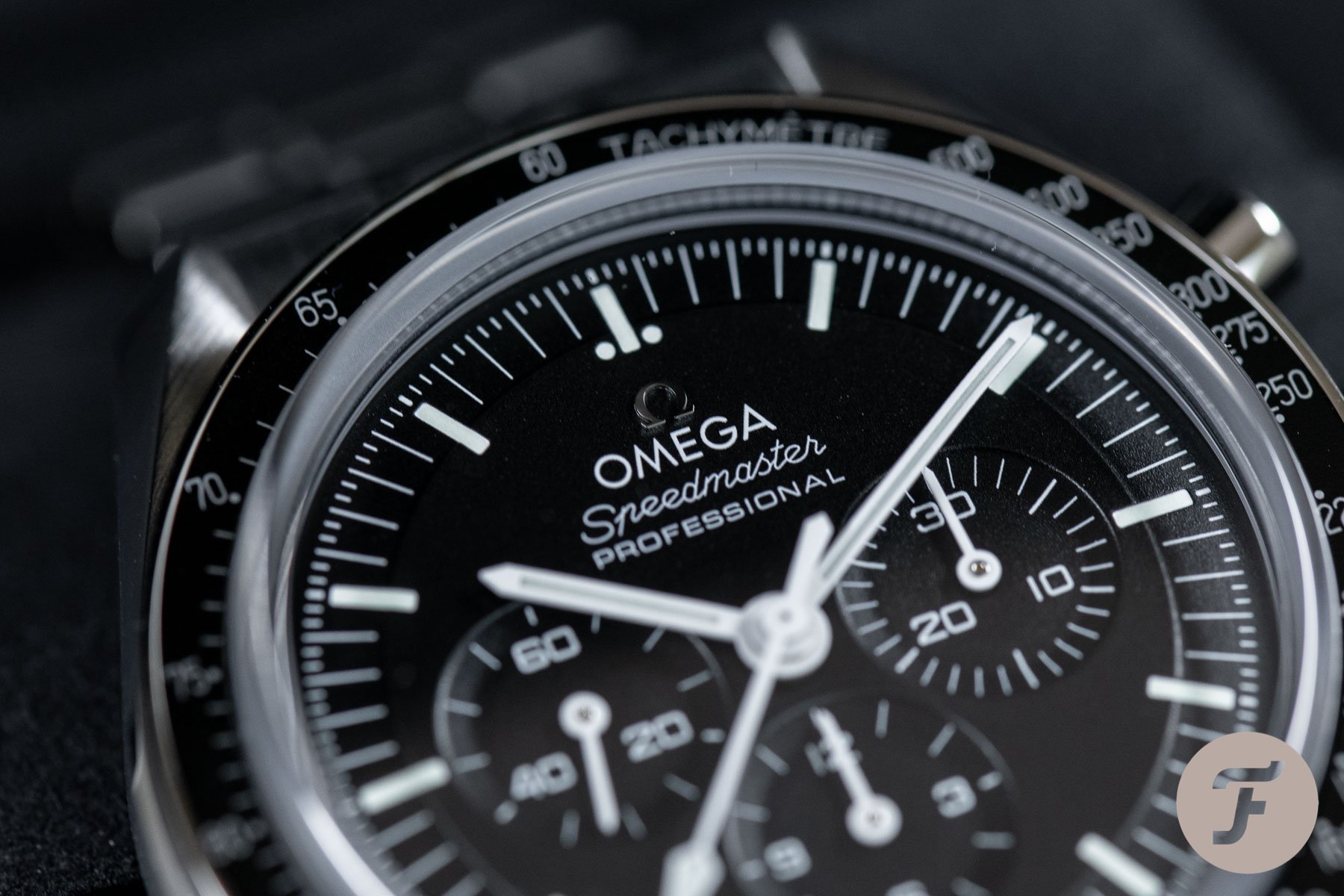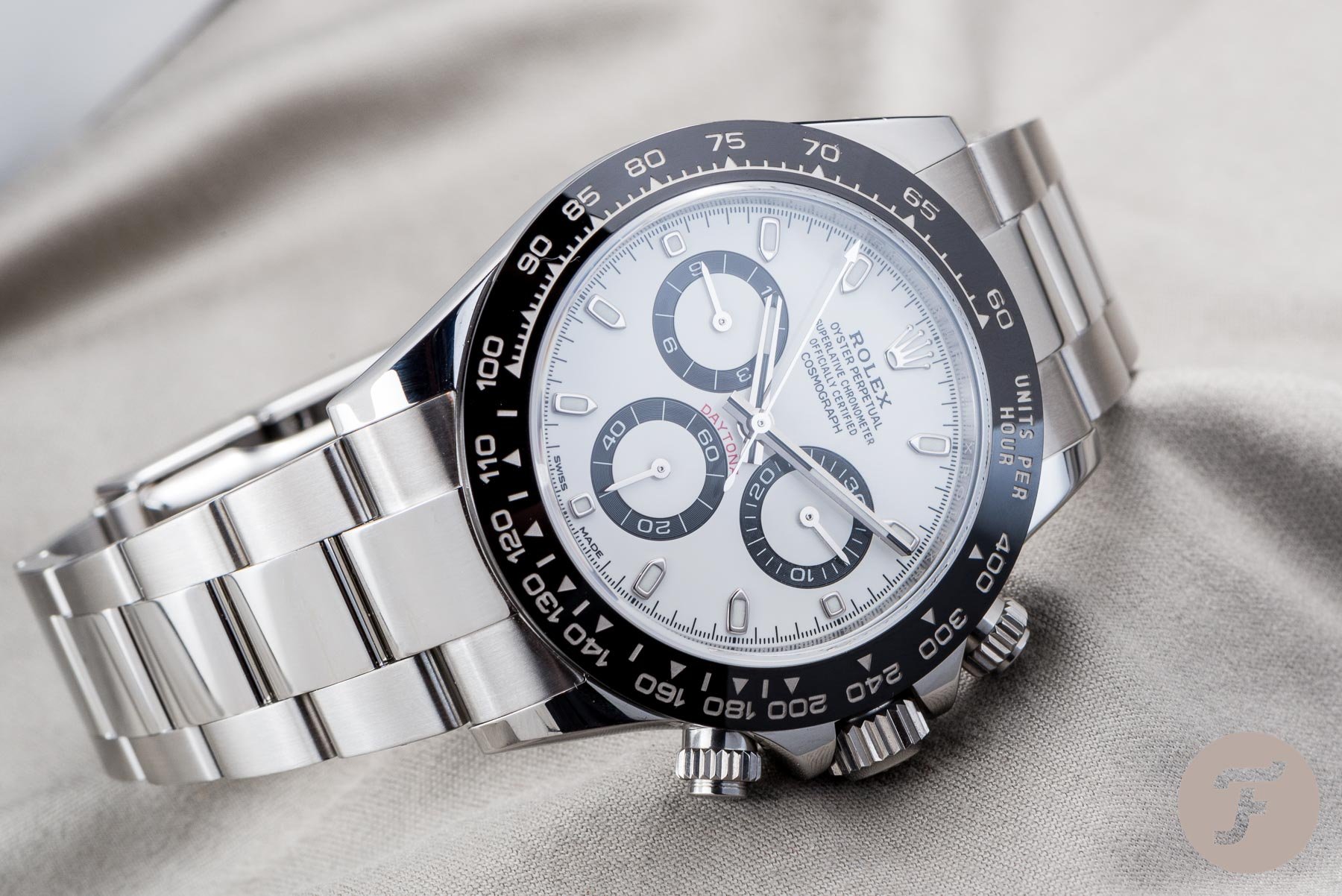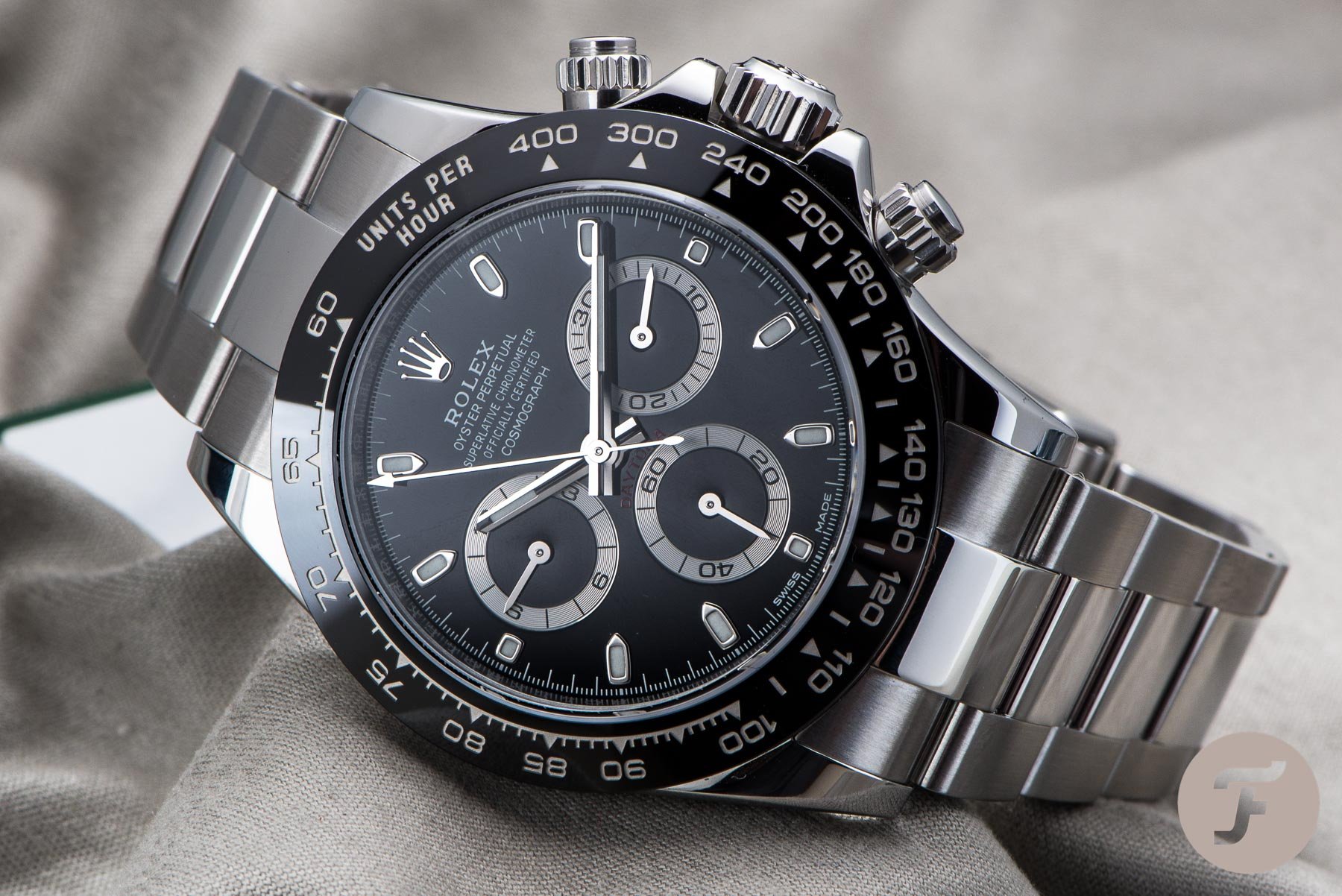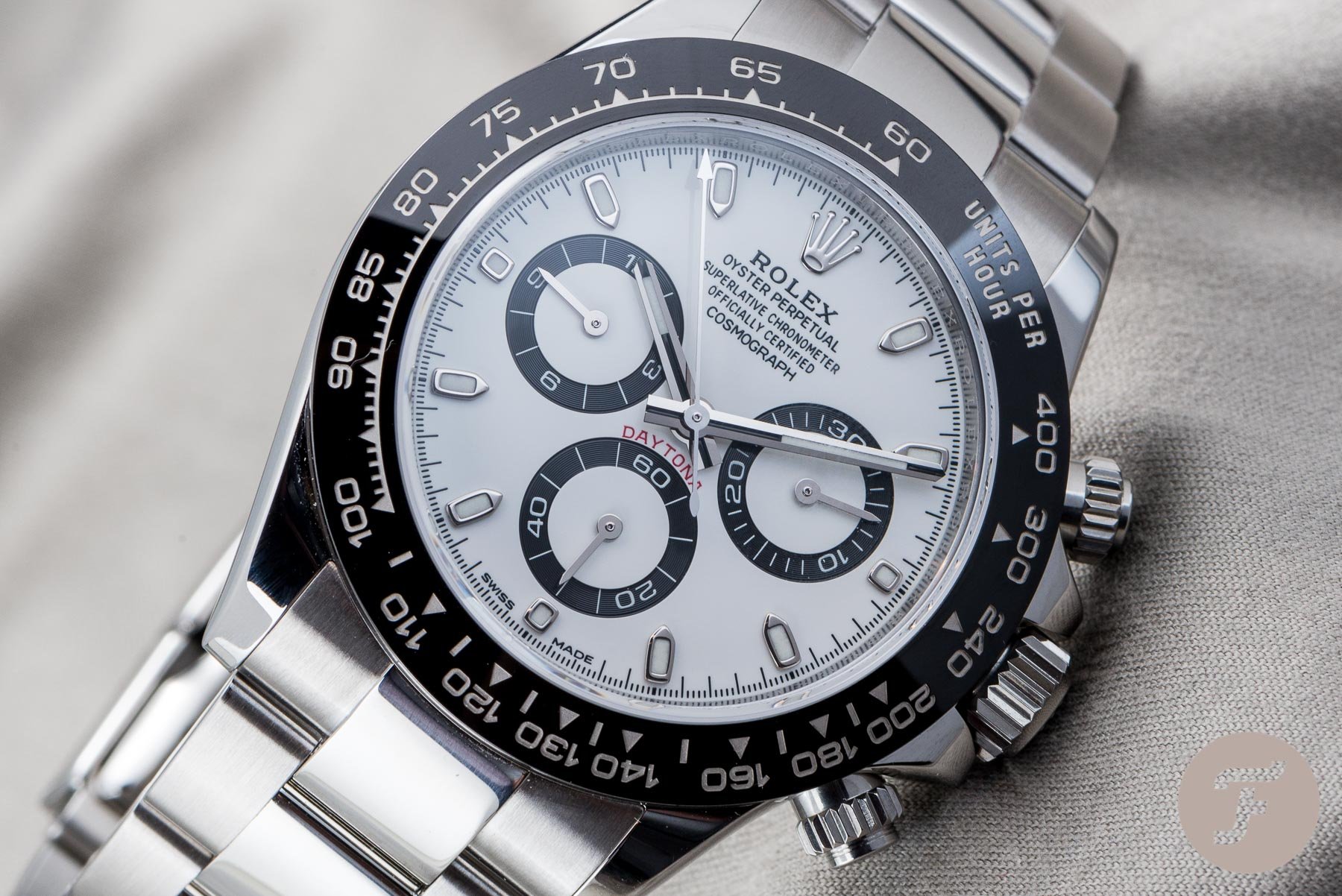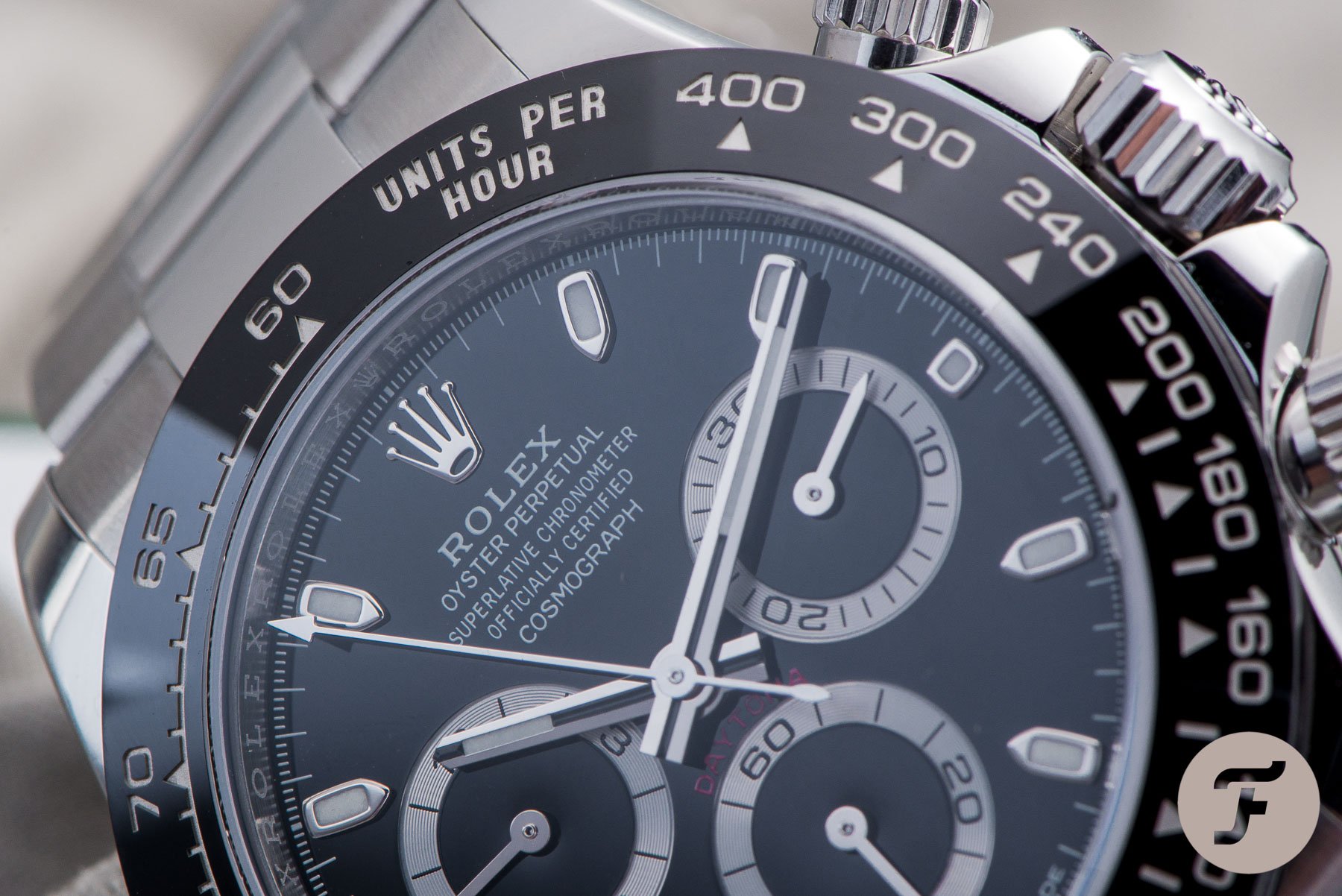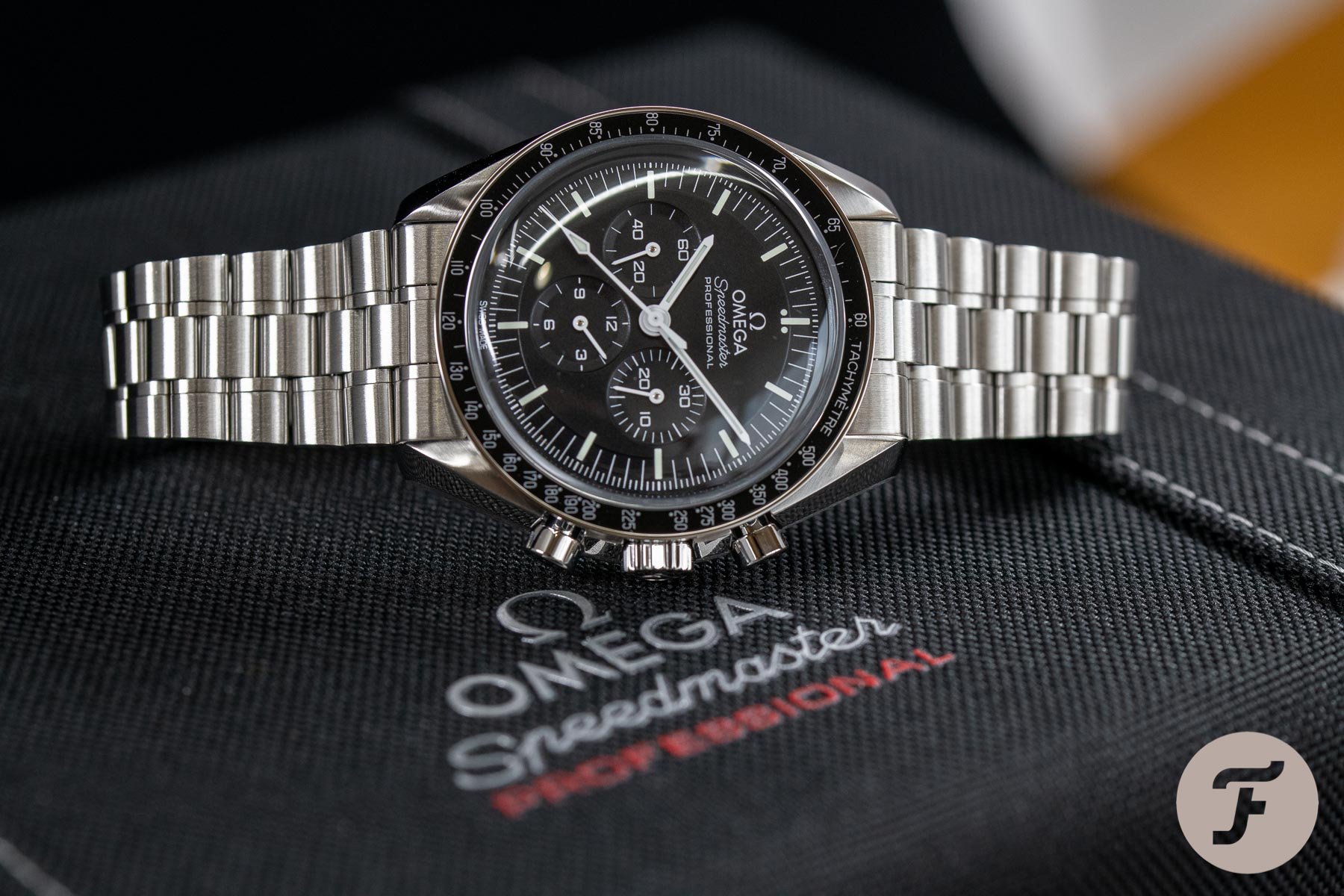Two For Tuesday: The New Omega Speedmaster Battles The Rolex Daytona
The field is set with two heavyweight chronograph juggernauts at the ready. The new Omega Speedmaster is primed to take on the Rolex Daytona. Does the Moonwatch now have what it takes to defeat the hypebeast darling?
It was one week ago that the new Omega Speedmaster finally broke cover. Most of us had seen leaks the month before, but Omega still brought some refreshing surprises. As such, the responses were quite positive aside from a few concerns regarding pricing. The first meaningful changes in 25 years to one of the world’s most recognizable watches qualify as big news. However, once the dust settles — and I see the specks before me on the desk — questions begin to form.
A meaningless, yet fun, one to consider is whether this modernized Speedy has what it takes to dethrone the most coveted of all sports chronographs: the Rolex Daytona. For the purposes of our discussion and voting, we’re keeping things on the steel side despite some fantastic precious metal offerings from both houses. Let the games begin…
The new Omega Speedmaster
It’s fair to say that the writing was on the wall for the new Omega Speedmaster way back in 2019. It was during that lovely year that we received the Apollo 11 50th Anniversary editions. Both the steel and gold model showed off several key updates. The new METAS chronometer-certified 3861 movement debuted and thankfully remained manual wind. Additionally, Omega changed the case slightly with more pronounced lugs, shorter pusher caps, and — here we go — gave us glorious new bracelets. We felt that all of these things served as harbingers for an upcoming Speedmaster. Thankfully, we were right.
A quick rundown on the specs
Last week, the new Omega Speedmaster dropped, and wow did it bring the goods. We received two new 42mm variants on the theme (four if you count the models on straps) and I must say that both are incredibly attractive and tempting in their own way.
Expectedly, there’s a version with a Hesalite crystal and solid case back that retains a form of the NASA certification slogan we all know and love. The second model comes with a sapphire crystal and matching display back. Both models sport the 3861, the METAS chronometer certification (magnetic protection to at least 15,000 gauss), shorter pusher caps, a step dial, and an aluminum “Dot over Ninety” bezel.
All are water-resistant to 50 meters and have 50 hours of power reserve. Intriguingly, the sapphire model has an applied Omega logo on its dial and the Hesalite has a printed version. The bracelets differ slightly in their finishing on both models. The sapphire version uses slightly polished small links whereas the Hesalite has an all matte affair. There’s a lot more detail on this in our launch article.
Whew!
I have two things to say about the new Omega Speedmaster. The first is, “whew,” and the second is, “thank goodness.” My first comment relates to the fact that Omega didn’t botch this release. The brand made some evolutionary changes, if somewhat retro stylistically, and they look fantastic. This was a watch that didn’t need anything new looks-wise, but the updates feel right. Yes, the dial along with the pushers and bezel harkens back to the original Speedmaster Professional 105.012, but that’s an all-time classic. Then, the new movement is an answer to those who wanted an official certification and it finally brings in the Co-Axial technology.
Thank goodness!
My second comment on the new Omega Speedmaster relates to the new bracelet. RJ sort of damned the old one with faint praise by calling it comfortable once on and of better quality in recent years. Meh… This bracelet, with its little shiny links, was always ugly to me. Plus, it was bulky, had massive end links, and a gargantuan clasp. Thankfully, the new bracelet looks a lot like the model on my Apollo 11 in Moonshine gold. The end links allow the bracelet to drape down directly at the case edge which will be more comfortable and aid those with smaller wrists.
The bracelet itself, if the gold is anything to go by, will boast beautiful finishing and will articulate wonderfully. Finally, the 15mm wide two-button clasp is small, thin, and looks like a precision premium product. Hallelujah!
The new Omega Speedmaster brings in much better finishing than its predecessor. This is something that Omega has introduced with every new release and I can simply state that the watches feel more expensive than in the past. The step dial looks amazing and the applied logo on the sapphire model really makes this model a hard choice versus the traditional Hesalite. With this little touch, I feel far more confident in recommending a sapphire Moonwatch to my “non-watch” friends who are a bit scared of a plastic crystal. The last sapphire models just didn’t do anything for me.
Final thoughts on the new Omega Speedmaster
The new Omega Speedmaster comes with new pricing. In Germany and on bracelets, the Hesalite retails for €6,100 and the sapphire comes in at €7,100. Some people registered alarm about what amounts to over a 20% price increase versus the old Speedy. Look, all I can say is that the Speedmaster Professional still ranks as a value-laden deal for such an iconic and well-made watch. It’s simply less of a deal than before, but I think that the movement upgrade, the increase in finishing, and the new bracelet justify the price. Plus, this is now a seriously anti-magnetic watch with far more accuracy. Perhaps the prior model was too inexpensive rather than this model being overpriced.
What you’ll soon see, though, is that the Speedmaster still undercuts its Rolex competitor by a wide margin. Even though there are some notable differences between the two, the Speedmaster has definitely become more competitive spec-wise. One thing we hope that continues with the new Omega is availability. In our current world of, “I have it but you don’t or can’t,” the Speedmaster has been a beacon of light. As watch fans, I’ve always said that we should be thankful that we can buy a Speedmaster new, at will, and in an AD. Finally, it’s a watch that’s instantly recognizable due to history, but it still registers as a genuine watch for those who want something good and credible. I’m not so sure our next contestant can attest to any of these attributes.
The Rolex Daytona
And now we come to the Rolex Daytona. Aside from its chronograph relation, this is a decidedly different watch from the new Omega Speedmaster. Therefore, it begs the question as to why we are having this battle. I’d say it’s simple because Rolex and Omega are typical competitors in the everyday luxury category. Also, both just so happen to produce legendary chronographs that have been around for decades. The comparisons, while more unwieldy in the modern era, are natural.
The specs
The current steel Rolex Daytona 116500LN models have been around since 2016. These watches are basically the third generation of automatic Daytona models. Right off the bat, we have a significant difference versus the new Omega Speedmaster. The Daytona was once a manual wind model, but this stopped around 1988. In 2016, Rolex gave us both black and white dialed stainless steel models with contrasting rings around their three sub-registers.
In addition, Rolex added black ceramic bezels to the models and made some minor changes to the indices and hands. Rolex kept the same 40mm case size as the 116520 predecessors and it possesses 100 meters of water resistance. The chronometer-certified 4130 automatic chronograph with 72 hours of power reserve also carried over from the prior models.
The launch
I can remember attending Baselworld 2016 and, as always, Rolex lifts its curtains at the start of the show. It was always a pretty hilarious thing to watch from a distance. If you’ve seen one of those Black Friday Wal-Mart doorbuster videos on the news showing people trampling each other, then you get my drift. Once all the influencers moved, we were able to take a longer look at the Daytona and most of us were pleased. Rolex, much like Omega, made some very evolutionary changes to its legend and brought in touches of modernity like the ceramic bezel. Overall, the changes kept the momentum of strong-looking watches with fantastic build quality. For me personally, it was also a bit of a change because I liked (and still do) the white model more than the black.
The reception and the madness since
The forerunning Rolex Daytona was already a watch with a waiting list. I mentioned in a previous article that I had once seen the prior Daytona models in showcases, but this was just after the last recession. The newest Daytona has only become more difficult to source since its release. Most ADs don’t even keep a waiting list or throw out a ridiculous number like five years. If one chooses to buy a stainless model on the secondary market, the prices are 70-80% higher than the €12,250 retail price. Is it ridiculous? You bet. Are there any signs that this is all slowing down? Sadly not.
My thoughts on the Rolex Daytona
I’ve always liked the modern Rolex Daytona, but I’ve never loved it. Not being able to find one doesn’t cause me any sleepless nights and I don’t schmooze the dealers here in Frankfurt in order to get into their good graces. Actually, those things make me not like the watch at all, but that’s not the watch’s fault, per se. I simply see it as a cool watch with a hell of a lot happening on the dial. That busyness honestly makes me long for the simplicity of the earlier manual wind models (or something like the new Omega Speedmaster).
I also don’t love the polished center links or the extending end links. Due to this, I think that Omega finally has Rolex beat on the bracelet front. Would I wear one? Sure, but it wouldn’t occupy a place in my rotation above other watches. One thing I do get is that the Daytona is a robust watch with a “set it and forget it” automatic caliber. The screw-down crown and pushers and the movement make for a fuss-free daily wearer.
On the other hand, one thing I don’t love about the Daytona is the price. I’m dating myself here, but I actually used to see the Daytona as a relative bargain before it crested the five-figure threshold. Now, even though the secondary market still disagrees and will readily swallow one, I just see it as expensive for what it is. If the Speedmaster Professional is on the comparison shopping list, a person can almost buy both new models for the price of one retail Daytona. That’s nuts! If other automatic chronographs with in-house movements are of interest, there are some really great pieces out there from Omega (again), Zenith, and Breitling to name just a few.
Time for your thoughts and to vote!
This is a rather Speedy-savvy site here on Fratello, so I’m curious to see how the new Omega Speedmaster fares versus the current Rolex Daytona. Let’s make it a little more specific, though. I’d ask you to consider the retail pricing of both and the availability of both and let’s assume that the new Speedy will be just as available as the last model. Also, let’s assume you can afford either, but I’d still ask you to consider value.
In the end, what I really want to know from all of you is whether you think that Omega has updated the new Speedmaster enough to put it in real contention with the Rolex Daytona. I know that the movements are different, but in the car world, for example, there are loads of comparisons pitting rear-engined cars versus front-engined, etc. So, let’s take the gloves off, vote, and bring those comments. Has the Speedmaster Professional truly arrived as a Rolex Daytona competitor or is there something keeping it off the top step?

